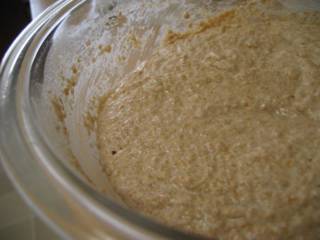
I was trying to find Gulf shrimp yesterday and had to visit several grocery stores before I was successful. In the morning, before I had begun my quest, I stopped in at my regular grocery store to get a couple of things. It was apparent after I entered the store that the power had gone out. While this particular grocery store is equipped to remain open when there is a power outage, the low lighting was a give-away that something was amiss. Later in the afternoon when I set out in search of Gulf shrimp, I decided to avoid that store because of the power situation. I went to a nearby Whole Foods, but as I started to get out my car an employee who was sitting outside called out to me that the store was closed. They were not set up to continue operations without power and in fact had resorted to moving all the meat onto a refrigerated truck. I drove over to another Whole Foods store but they didn’t have Gulf shrimp. Next stop was a gourmet store about fifteen miles from my house. I parked, and entered the store. That is, I entered through the first automatic door, but the next door did not open for me. Then I noticed it was dark inside. Would you believe the power had gone out at just the moment I was entering the store? Thankfully, it turned out not to be the east coast blackout that I feared and I finally did find some Gulf shrimp.
So why did I want Gulf shrimp? Well, let me back up a little. As you may know if you’ve read some of my earlier posts, seafood is not something I usually eat. My comfort zone for seafood is pretty much limited to canned tuna. I’m currently reading Jeffrey Steingarten’s The Man Who Ate Everything and am intrigued by his notion that you can rid yourself of a food aversion by eating the food eight to ten times at moderate intervals. I decided to start with shrimp, which strikes me as a lesser evil when it comes to seafood.
I dragged out a number of my cookbooks to read up on how to buy and prepare shrimp and to find a recipe that sounded appealing. I learned that most shrimp is either frozen or has been frozen, so chances are when you see something called fresh, it isn't really. I also learned that the preferred varieties were from the Gulf of Mexico. So, as recounted above, I decided to look for Gulf shrimp. I think next time I will buy whatever kind Whole Foods has. I did finally find Gulf shrimp, but I’m pretty sure it was not as fresh as it ought to have been.
The recipe I settled on was a very simple one from Mark Bittman’s How to Cook Everything. The shrimp were roasted in a hot oven with olive oil, rosemary, freshly-squeezed orange juice and some orange zest. I was encouraged by the aroma from the oven as they cooked – it smelled pretty good. Actaully, for a first try at eating a food I don’t like, it went well – I ate the full portion that I had served myself. The shrimp were subtly flavored with orange and rosemary, but I think I would have preferred something bolder. Next time I plan to try Shrimp Fra Diavolo with Linguine, which, with tomatoes, wine, and lots of hot pepper, should fit the bill.





































